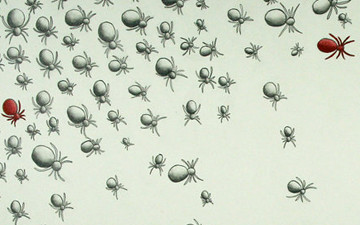Biological control of pests in agriculture is a method of controlling pests (includinginsects, mites, weeds and plant diseases) that relies on predation, parasitism,herbivory, or other natural mechanisms. It can be an important component of integrated pest management (IPM) programs.
Biological Control is defined as the reduction of pest populations by natural enemies and typically involves an active human role. Natural enemies of insect pests, also known as biological control agents, include predators, parasitoids, and pathogens. Biological control agents of plant diseases are most often referred to as antagonists. Biological control agents of weeds include herbivores and plant pathogens. Predators, such aslady beetles and lacewings, are mainly free-living species that consume a large number of prey during their lifetime. Parasitoids are species whose immature stage develops on or within a single insect host, ultimately killing the host. Most have a very narrow host range. Many species of wasps and some flies are parasitoids. Pathogens are disease-causing organisms including bacteria, fungi, and viruses. They kill or debilitate their host and are relatively specific to certain insect groups. There are three basic types of biological control strategies; conservation, classical biological control, and augmentation.
(From Wikipedia, June 11 2010)
– – –
Animal population control is the practice of artificially altering the size of any animal population besides humans. It typically refers to the act of limiting the size of an animal population so that it remains manageable, as opposed to the act of protecting a species from excessive rates of extinction, which is referred to as conservation biology.
(From Wikipedia, June 11 2010)


